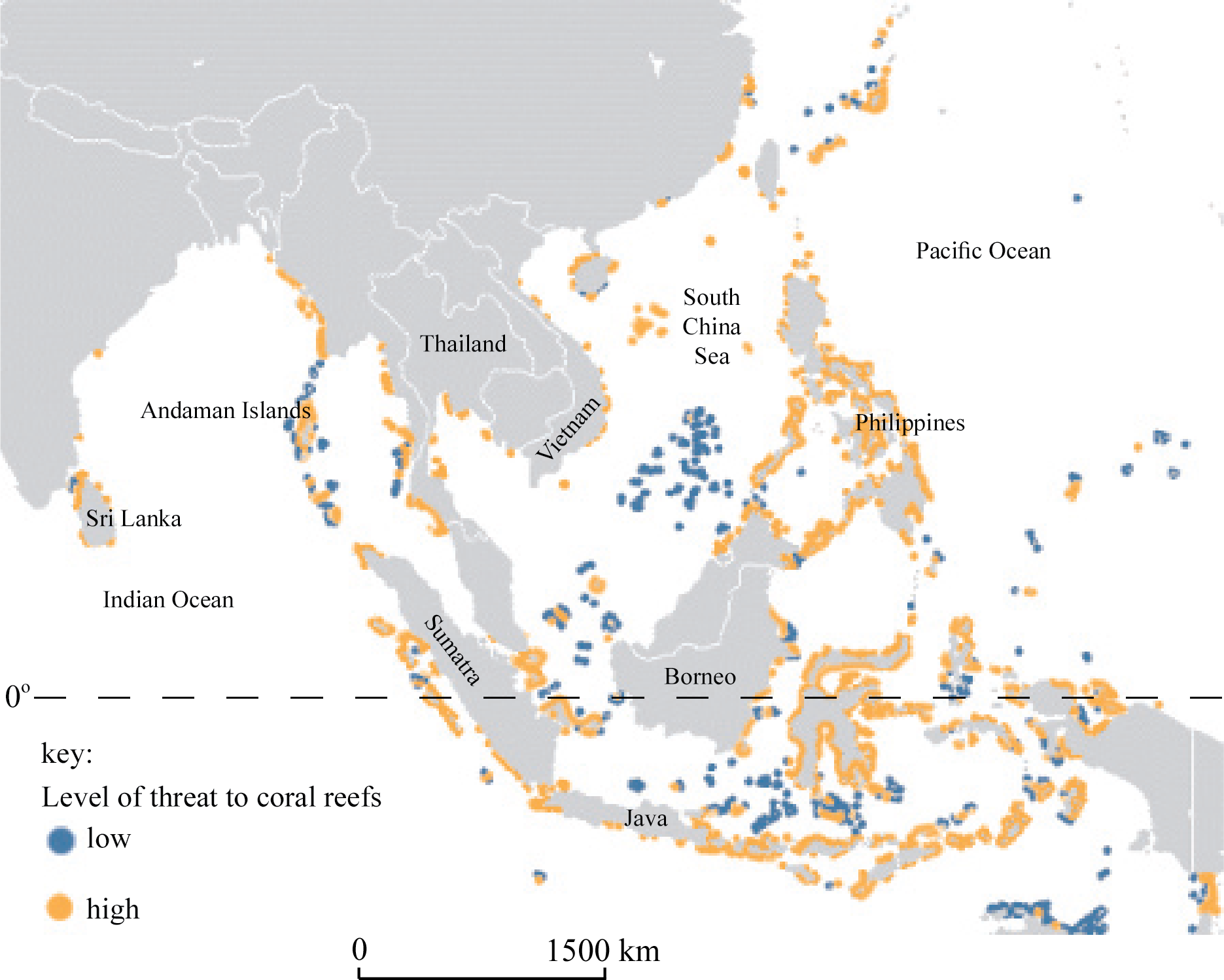| Date | Marks available | 6 | Reference code | .2.bp.4 | |
| Level | SL and HL | Paper | 2 | Time zone | |
| Command term | Explain | Question number | 4 | Adapted from | N/A |
Question
The map shows the estimated threat to coral reefs in South-East Asia.

[Source: modified from the United Nations Environment Programme’s Global Environment Outlook 2000 publication http://www.unep.org/geo2000/english/i86a.htm]
Describe the pattern of threat to coral reefs shown on the map of South-East Asia.
Explain three socio-economic impacts of the loss of coral reefs and mangrove systems.
Using a case study, evaluate the management strategies adopted to resolve the pressures on a particular coastline.
Markscheme
The greatest threats appear to be clustered around the larger islands/landmasses, for example, around the coast of the Philippines or the main islands of Indonesia [2 marks].
Lesser threats are found in more isolated areas. Areas which may be selected include the Andaman Islands, the island chains to the east of Vietnam and those further to the east of the Philippines in the Pacific Ocean [2 marks].
Some overview as opposed to a list to describe the general pattern is required for full marks.
The impacts may include a reduction of fish stocks resulting from a loss of biodiversity, a demise in tourism due to the destruction of reefs, a reduction in seafood stocks, and an increase in the vulnerability of coastal populations to inundation resulting from a loss of mangroves. Both coral reefs and mangroves protect coastal areas against erosion and their removal or degradation may impact on beaches and low-lying farmland. Mangroves, if managed sustainably, provide a valuable source of hardwood and charcoal. It is often poorer communities which exploit both the mangrove and coral reef ecosystems and the socio-economic impact is felt most by these more vulnerable groups.
Other valid socio-economic impacts should be accepted.
Award 2 marks for each valid impact, provided it is developed.
A wide variety of examples may be chosen and strategies may range from those which protect coastlines from erosion, to marine parks/reserves or implementing policies to manage retreat. The strategies may involve hard or soft management or revitalizing coral reefs or mangroves using innovative techniques. Whatever case study is chosen, the pressures must be clearly stated, together with the strategies adopted in response to these pressures.
Responses including explicit evaluation of appropriate management strategies on a particular coastline are likely to be credited at bands E/F. Responses which fail to refer to a specific case study will be self-limiting and may only achieve a maximum of band D.
Marks should be allocated according to the markbands.

